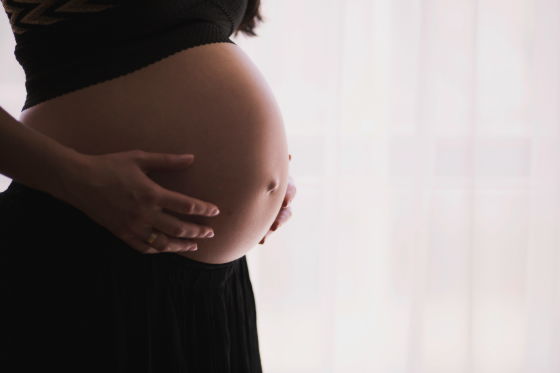What is dry cleaning?

by averie woodard
Science-based media Live Science wrote about what kind of cleaning method " dry cleaning " is because the fat and oil stains are easy to fall and stretching is less prone to cause damage to clothes.
What Is Dry Cleaning?
https://www.livescience.com/63089-dry-cleaning.html
Water may hurt wool, leather, and certain cloths such as silk, and if you use a washing machine, delicate decorations such as races and sequins may be broken. Dry cleaning is used when you can not wash properly with such a home washing machine. Dry cleaning is a washing method of using a different liquid instead of water at laundry time, as it is imagined from its name, it does not mean "to wash dry without leaving it dry".

by Ian Valerio
◆ Solvent used in dry cleaning <br> Dry cleaning uses a variety of solvents to clean cloth. When dry cleaner just appeared, it seems that gasoline, kerosene, benzene, turpentine, petroleum, etc. were contained in the solvent. However, according to the State Coalition for Remediation of Drycleaners (SCRD) that supports dry cleaning technology, synthetic nonflammable solvents such as tetrachlorethylene and decamethylcyclopentasiloxane widely used in 2018 were developed in the 1930s After being used, it is a solvent that has been used for a long time to modern times.
According to the report " (PDF) Chemical substances used in dry cleaning ", chemical substances used as solvents in dry cleaning such as tetrachlorethylene are "liquid as a function to help remove water-soluble soils "Suspending dirt after being removed from the cloth so as not to be absorbed by the cloth again", "action as a stain removing agent for penetrating into the cloth so that the detergent can remove the stain" Three are required.
◆ Dry cleaning process : According to the International Trade Association for Clothing Care Professionals Drycleaning & Laundry Institute (DLI), the machine used in dry cleaning is composed of four elements. The term "tank for holding solvent", "pump for circulating solvent" "filter for removing impurities and protecting solvent and cloth from dirt" "cylinder for containing washed items" Four spaces ".
During dry cleaning, the pump withdraws the solvent from the tank and the impurities are removed from the solvent through the filter. Filtered solvent by passing through a filter is poured into a cylinder, where it plays the role of removing dirt from the cloth. After that, the solvent returned to the tank and the same process circulated.
When cleaning of the item is completed, the machine removes excess solvent and rotates the cylinder containing laundry like a domestic washing machine. After this process is over, clothing is said to be dried in the same machine or dried with another machine. In addition, excess solvent is collected, filtered, and returned to holding tank.
◆ History of Dry Cleaning <br> The history of such dry cleaning dates back to ancient times. At the ruins of Pompeii that were destroyed by the eruption of Mount Vesuvius, there was a way to wash delicate items. When Pompeii flourished, there are professional clothes washers called "fuller" in the city, using excellent solvents to absorb dirt and sweat such as ammonia and Fuller's soil , delicate delicate clothes such as wool It seems that it was washing, this is considered to be the very first dry cleaning.
According to DLI, it was said that "A clumsy maidte spilled kerosene on the tablecloth" was the reason why modern dry cleaning was born. Kerosene spilled on the table cloth evaporated quickly, so that only that part was so beautiful, so many people started experimenting with kerosene and other chemical substances and greasy dirt It is said that solvents suitable for dropping have been studied. According to SCRD, the materials experimented as solvent at this time include terpentine essential oil, kerosene, petroleum-based liquid, gasoline, camphor oil and so on.
According to the book about solvents " Handbook of Solvents ", the first thing that was successful in commercial dry cleaning is the "Jolly-Belin" store opened in Paris, France in 1825. Since fashion was regarded as an important part of society from that time, it seems that there were soils where dry cleaning was acceptable to citizens in Paris.
The first dry cleaning shop was born in the United States at about the same time. Thomas Jennings, who is said to be "the father of an American tailor," in 1821 called "dry removal" to clean clothes that would hurt in traditional cleaning methods, the first patented Africa in the United States I became American Americans. Jennings uses this patent and will make great success in New York in the main business tailor and dry cleaning business.

by Michael Hicks
Petroleum solvents that were in use at the time were flammable, so alternatives were sought. Michael Faraday synthesized tetrachlorethylene for the first time in 1821, but tetrachlorethylene was developed as a solvent for dry cleaning in the early 1930's. After that, tetrachlorethylene became popular as a substitute for petroleum solvents due to the shortage of oil during the Second World War.
◆ Environmental and health concerns <br> Tetrachlorethylene frequently used in dry cleaning, but it is known to be a substance that is both risky in health and the environment. According to the Occupational Safety and Health Research Institute (OSHA), employees working at dry cleaning stores are likely to increase the risk of developing complications of health by contact with tetrachlorethylene. This is because an employee packs dirty clothes in a machine and is exposed to the vapor of tetrachlorethylene standing in from the machine when taking in clothes after drying or changing the filters of the machine.
Employees regularly exposed to tetrachlorethylene are more likely to develop certain types of cancer. According to a paper submitted to the American National Library of Medicine, it has been pointed out that if you are exposed to tetrachlorethylene for a long time, symptoms such as multiple myeloma and non-Hodgkin's lymphoma may develop in the esophagus, cervix and bladder . It also leads to damage to the central nervous system, liver, kidney and lungs. Another study has pointed out that when tetrachlorethylene is used as a solvent, the case of developing bladder cancer by exposure to it is very high. In addition, the possibility that tetrachlorethylene affects the reproductive system of men and women, causing changes in sperm structure and decreasing fertility (power of pregnancy) has also been investigated .

by freestocks.org
In addition, it has been pointed out that dry cleaning adversely affects the environment. It is suggested that harmful substances and pests may be released into air, water and soil in the vicinity of dry cleaning facilities.
◆ The Future of Dry Cleaning According to a survey by market research company · IBISWorld, as of 2017 there are 36,000 dry cleaning stores in the United States. However, according to some sources it seems that dry cleaning stores are crushed in many areas in the United States. This includes a variety of things, such as rising land prices and the rise of fast fashion. In addition, it is pointed out that many of the dry-cleaning shops are small family-run companies, suggesting that there are many cases that shops are crushed without finding successors.
In addition, in California, the use of tetrachlorethylene in dry cleaning is gradually abolished, so the future of the dry cleaning industry seems to be not bright.
Related Posts:
in Science, Posted by logu_ii







